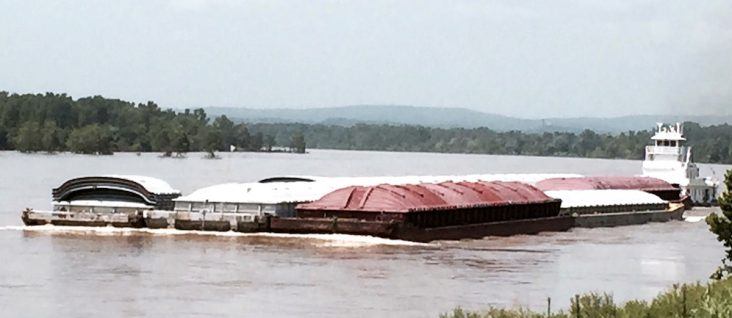Fort Smith metro entities consider $200,050 intermodal transportation study
by February 1, 2017 10:30 am 755 views

The Fort Smith Board of Directors is not sure it wants to increase funding for another intermodal port study to be managed by the Western Arkansas Regional Intermodal Transportation Authority (RITA).
The Fort Chaffee Redevelopment Authority (FCRA) and Fort Smith Board held separate meetings with Western Arkansas Regional Intermodal Transportation Authority (RITA) representatives and John Vickerman of Virginia-based Vickerman & Associates to discuss cost sharing for an “eight- to nine-month contract” that will analyze the Fort Smith metro region intermodal transportation options.
RITA is funded annually in the amount of $40,000 each by five bodies — the FCRA, the cities of Fort Smith and Van Buren, and the counties of Sebastian and Crawford. The study would require an additional $40,000 contribution from the entities to fund Vickerman’s work, which will cost $200,050 total. Included in the scope of services are $8,610 for data collection; $70,000 for a target market assessment; $39,000 for a conceptual terminal development plan; $37,440 to prepare a request for expression of interest (RFEI); and $45,000 for RFEI solicitation and outreach.
This newest proposed study would not be the first. RITA in 2009 received $375,000 in state funding to study options for intermodal port operations in the Fort Smith-Van Buren area. In 2012, RITA voted to sign a cost-sharing agreement with the United States Army Corps of Engineers to move forward with the feasibility phase of the Northwest Arkansas Regional Port (formerly known as Lavaca Slackwater Harbor). That report was set to be completed in December 2013.
FORT SMITH BOARD REACTION
While the FCRA board voted unanimously to move forward with the additional expenditure, Fort Smith Director Tracy Pennartz expressed concerns the already cash-strapped city would need to contribute an additional $40,000 it did not include in its 2017 budget. Vickerman advised it is not uncommon for a study such as this to lead to hundreds of millions of dollars in private investment if the right developer can be located through the RFEIs, though he acknowledged “there’s no crystal ball.” Vickerman has done similar work on 67 of the 90 North American deep water ports, including two of the largest in New Orleans and Chicago.
Vickerman noted the fastest growing segment of business for Class 1 Railroads is intermodal transportation, or “the ability to move a container from truck to rail and back.” Fort Smith, he said, has truck, rail, water, and air freight capabilities making it uniquely positioned against other ports nationwide. While the direct jobs impact would be slight for any resulting intermodal facility, Vickerman said the real value is in company warehousing and distribution centers that “halo” around such a facility, producing additional jobs and allowing companies to greatly reduce drayage costs, or the costs incurred from transporting goods over a short distance.
“The more attractive cost reductions are to companies, the more likely those companies are to invest in an area,” Vickerman explained.
RITA Director and Rep. Mat Pitsch, R-Fort Smith, reminded that from a public sector perspective “we’re not going to have to issue $39, $49, $59 million to build this. This will be a private sector initiative. It’s what those of us in government absolutely crave. Just give us the infrastructure, but let a private industry build it and negotiate constraints so that it functions as a public harbor.”
Pitsch continued: “I want to make sure people don’t perceive that we’re asking, ‘Say yes, so we can issue a bond or go tax the citizens.’ That’s not what we’re doing.”
The Board of Directors was not as ready to show its hand on Tuesday. However, city directors agreed to place the item up for vote on the Feb. 7 regular meeting agenda.
